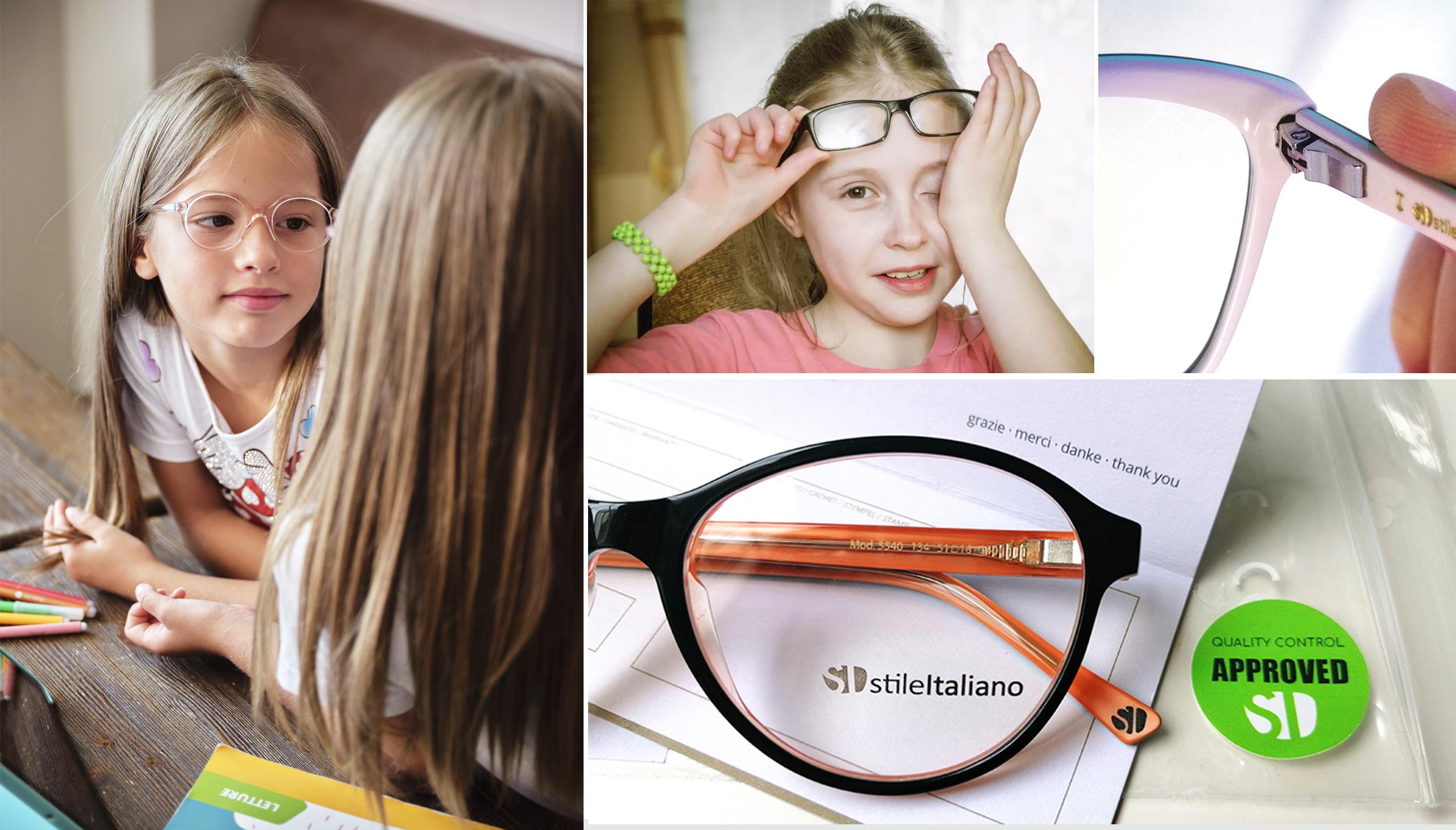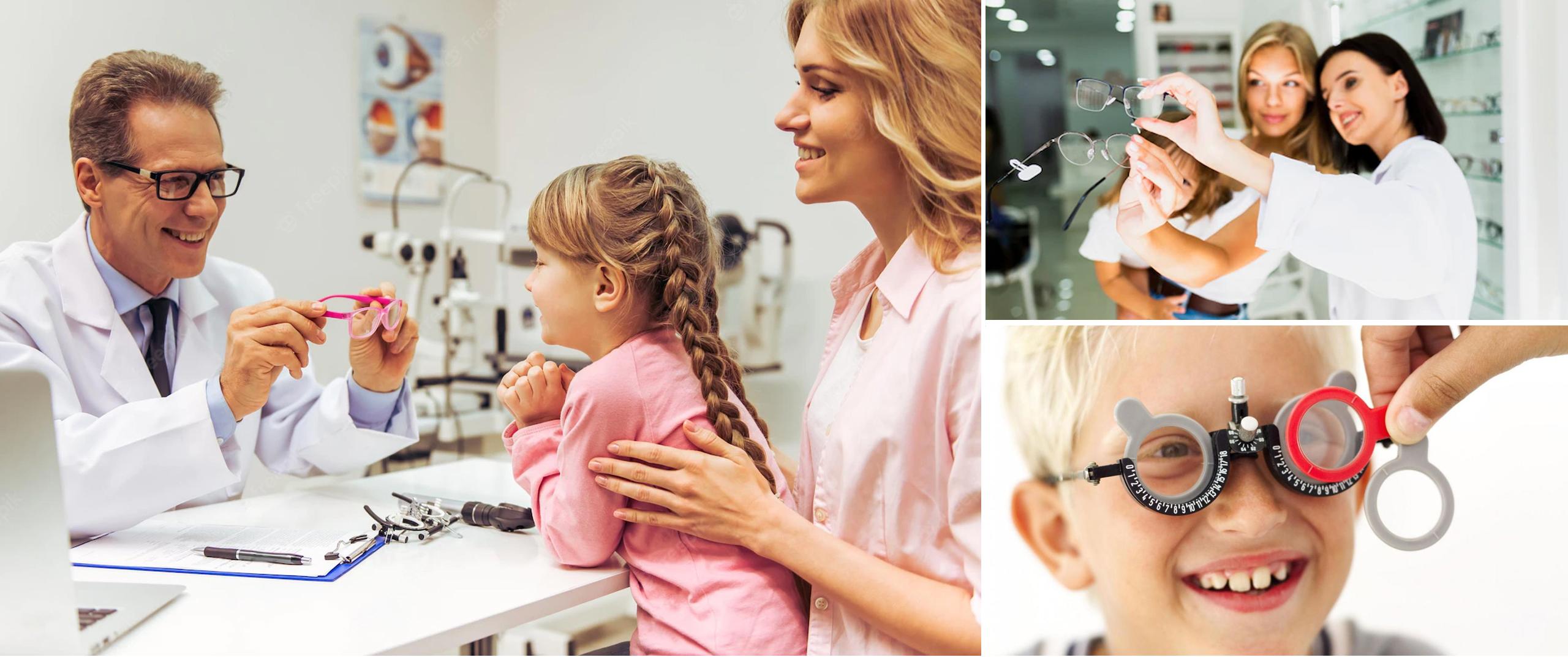Your CHILD’S FIRST glasses…. Let’s do it TOGETHER!!!

⏱️ 03:10 MINUTES OF READING
It’s time to buy the first pair of glasses for your child. How can you choose the right one? And more important, how can you get him/her to wear them?
In this article, we have collected a list of important tips that will help to get your child to wear glasses comfortably.
It is important not to say anything negative on any glasses the child chooses to try, as such comments could be seen as a personal attack and lead the child to completely retreat into a shell and refuse any kind of suggestion.
The following recommendations have been compiled starting right from the perception that the child might have of this new thing. And it is known that most of the time wearing glasses is just a nuisance for them. The good news is that if they are worn correctly, they are an annoyance only at the beginning.

Before embarking on this adventure, it is important to evaluate how long the glasses will be worn during the day, all the time or occasionally? In the first case, it will be necessary to consider more things. The second case, instead, is easier and allows to try a more “original” frame.
So, we decided to list here ten keywords to help you find the glasses that the child will want and accept.
WISHES
Let your child express himself/herself freely! As we already mentioned in our previous article, children often want to look like their favourite superhero more than like their parents. So ask him to express his choice! It’s important to remember that the child might go through this experience as something unpleasant, so do not suggest a frame that will make him feel uncomfortable but rather try to find something positive in any of his choices.
This is very important for everything that will follow once you are home. If the child associates the glasses with negative emotions right from when he tries them on the first time, this uneasiness will most likely carry over into the everyday life and he will not be so happy to wear them.
BROTHERS/FRIENDS
Based on our experience, we recommend involving in this choice one of your child’s friends, maybe one who already wears glasses, or an older brother who can tip them on the latest trends. This way, the child will feel the support of someone more similar to them as well as that of the parents.
MATERIALS
Acetate or metal frame? You’re probably asking yourself which material is better. The main difference between the two frames is the bridge. The nose of children is not completely developed yet and so some acetate frames are often not firm, they slip and become uncomfortable to wear. Eventually, they will be forgotten in some places, thus risking the worsening of the child’s visual impairment. Today, acetate frames are designed with a smaller bridge to better address this need. This issue can be bypassed in metal frames as there are nose pads that you can adjust and that can guarantee a better fit on the child’s face. On the other hand, acetate has a less angular, rigid and austere look while being light and robust at the same time. In addition, it can be more colourful and attractive, creating really interesting and original combinations. Regardless of which material you prefer, always make sure to choose a HYPOALLERGENIC frame to avoid any tolerability issues.
TEMPLES
This choice depends on how much time the child will spend wearing the glasses. If they are only worn occasionally, perhaps while reading in the evening or doing the homework, then there are no particular requirements. If, instead, they will be used throughout the day, and even more if they are the child’s first glasses, we recommend considering temples with flex hinges as they are strong and sturdy and will increase the durability of the frame during the different activities done by the child during the day. The cost will be slightly higher but it’s just a small investment that over time will be completely repaid.
It could be also useful considering temple tips slightly larger than normal in order to increase their adhesion. This can be increased with the use of a lanyard – they come in many types and colours – which allows to tie the glasses behind the head preventing them from falling off and breaking.
LENSES
The lenses can be made of different materials. Ask your optician for the most suitable one for you. There are lenses in plastic and glass. Normally the first choice for a child is plastic because it’s lighter and also because it doesn’t shatter in case of impact avoiding possible damage to the eye.
WARRANTY
Your optician may recommend an additional warranty that allows the replacement of the glasses or the lenses in case of breakage. Make sure you are told what is included in the warranty and especially what is not, so as not to have any questions in the future. This service is recommended if the glasses will be worn throughout the day or during sport activities. Of course, it becomes almost essential if they are the first pair of glasses you buy for your child!
SECOND PAIR
Always consider purchasing a second pair of glasses, especially if the child suffers from severe visual impairment and must wear the glasses all day during all his activities. A second pair will ensure that your child will always have eyeglasses available when needed.
AWARNESS
An important task that parents should not underestimate is the need to make the child understand why he has to wear glasses, perhaps proposing activities to be done together, e.g., reading with and without glasses to be able to notice the difference.
ROUTINE
The reason your eyeglasses are the right ones is that they become right day by day. You’re probably wondering what that means?! Once you have chosen the glasses, perhaps the optician’s work is finished but not yours, as you will have to make sure that the child wears his new trusted friend on any due occasion.
This is a delicate period, especially if they are the child’s first glasses. So we recommend that you encourage your child to wear the glasses using some tricks. Reassure him that you feel proud that he is wearing the glasses without any complaints. Also, do not reproach him too much for not wearing the glasses when he should. On the contrary, praise him when he wears them of his own accord without needing anyone to remind him. Or take some selfies that you can store to look at them together. Another possibility is to convince the child that the glasses will allow him to enjoy more his favourite cartoon.
PATIENCE
It’s the last but not least word on this list. You need patience when your child will not be able to decide on the glasses he wants, patience when he will struggle to wear them at home, patience when by chance they will fall on the ground and get damaged. Patience meaning a hand stretching out ready to support them during this new and somewhat difficult moment in their children’s life.
We trust that these guidelines will help you to ease your child’s first experience with eyeglasses, so that he can better deal with his visual impairment.
Check out our blog and stay up to date with our latest news!
